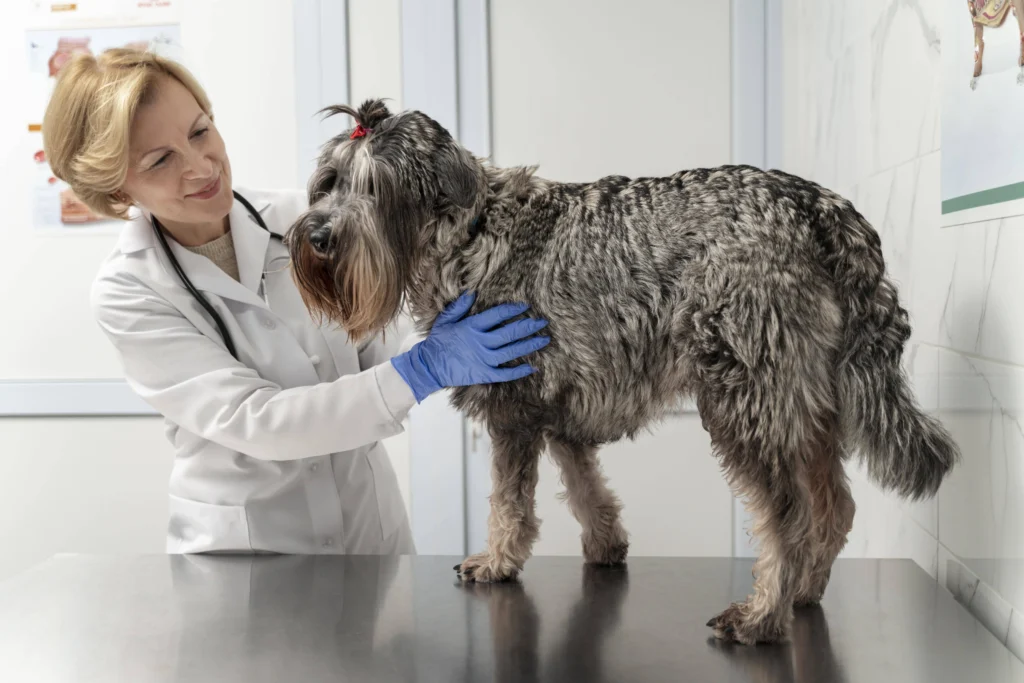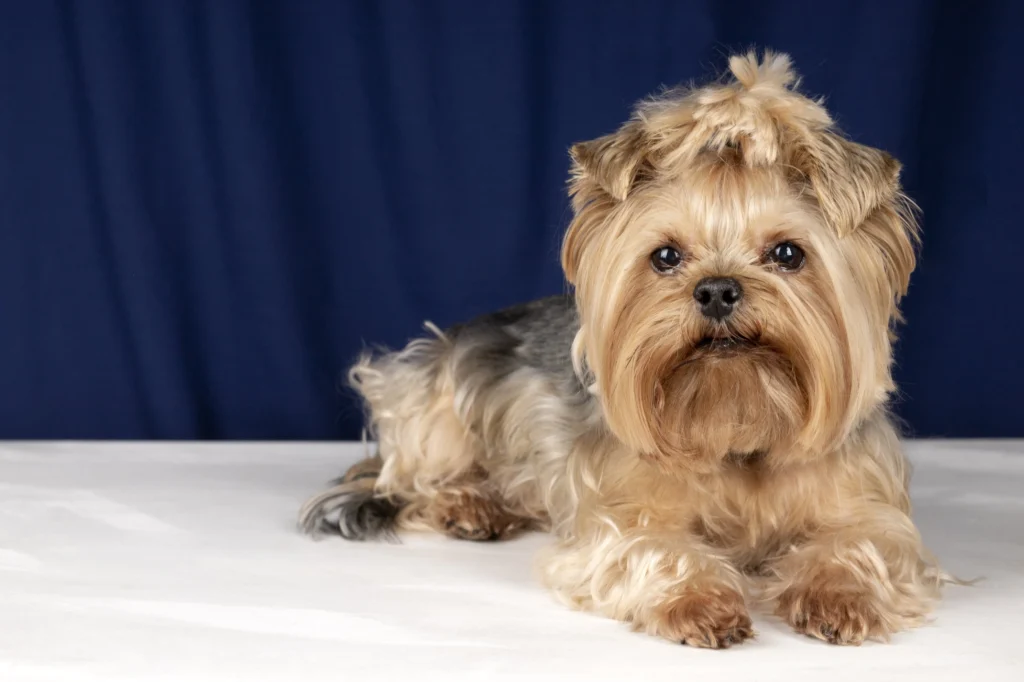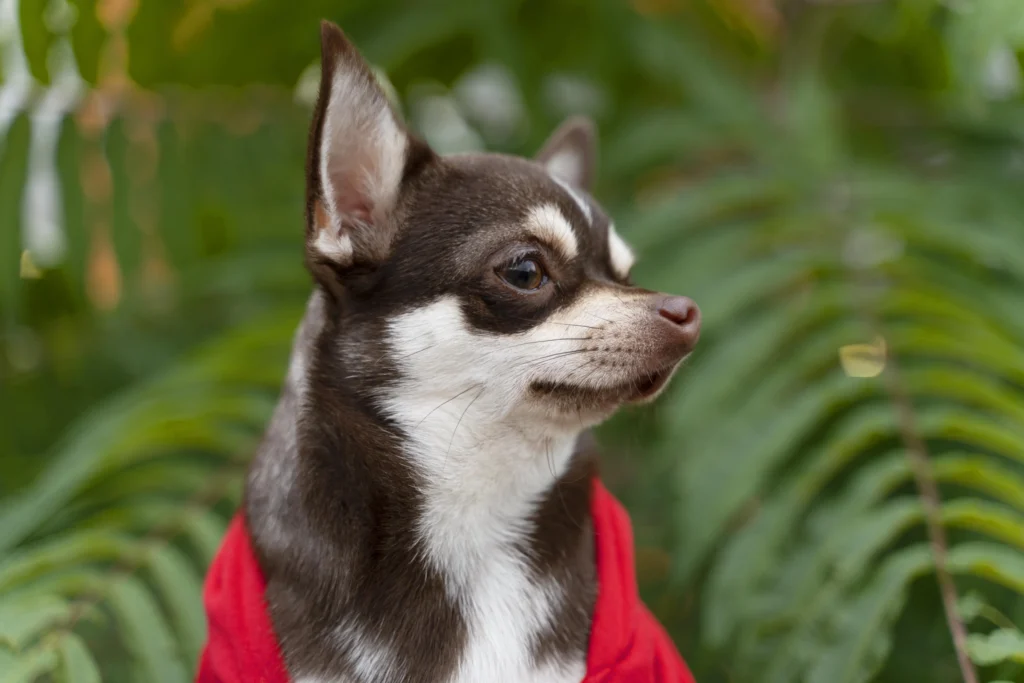If you’re looking for a little dog with a big heart and personality, along with an attractive look to go with its name, you may want to consider the Shih Tzu. If you are a first-time dog owner or adding to your pack, you will find what you need to know about the Shih Tzu dog breed. This will help you factor in the dog breed’s fit for your lifestyle.
Breed Overview
- Weight: 9–16 pounds
- Height: 9–10 inches
- Life Span: 10 to 18 years
1. Origins & Heritage
The term “Shih Tzu” translates directly as, “little lion” (in Chinese: 獅子 (shīzi)), referring to the breed’s influential image as a lion dog in Buddhist art and their historic representation of royalty (Caroline Coile, 2025). The Shih Tzu breed can be traced back to Tibet and China, and is likely the end result of breeding the ancient Tibetan lion dogs to toy breeds such as the Lhasa Apso and Pekingese. In history, the Shih Tzu were esteemed as luxuries of the Chinese imperial court, especially for the Empress Dowager Cixi. For centuries, the Shih Tzu has been kept as a royal pet as opposed to being a common breed. After a time of decline (including near extinction after the Chinese revolution), contemporary Shih Tzus were re-populated following breeding imports into Europe and North America.
The breed’s noble/royal background gives the Shih Tzu a unique and stately presence as a “royal companion” and the grooming and health needs that aristocratic breeds require.
2. Temperament & Personality
Shih Tzus are known for warmth, sociability, and companionship. They need human interaction and don’t generally do well if left alone for long stretches of time. They possess an inner playful spirit. While they are small, they enjoy short walks, indoor play, and trick training, but they are seldom high-energy athletes. Shih Tzus were bred to be “alert” dogs in palaces and they will bark as a warning for visitors or environmental changes. With proper socialisation and training, this aspect of their nature can be mitigated.
Suitable for home:
- Families who can provide consistent attention and integrate the dog into their day-to-day activities.
- Apartment living or small homes is acceptable so long as the dog receives some mental engagement and moderate amount of exercise.
- Households with older children (or very close supervision for very young children) for durability in handling because of fragility.
Disadvantages:
- If too much time alone, the Shih Tzu has the potential to develop separation-related behaviours.
- Its pampered ancestry may cause it to be a “lap dog,” wanting the luxury rather than venturing outdoors.
3. Physical Attributes & Care Needs
Size & structure:
- Usually weighs between ~9 to 16 lbs (4-7 kg) and height is about 10 inches (25 cm) at the shoulders (Katie Grzyb (2025).
- Shortly-built, slightly longer than tall, has a short muzzle (brachycephalic), has big round eyes, and has a dense, long double coat.
Grooming & coat care:
- The flowing coat is stunning, but it needs regular attention.
- Daily brushing is best to decrease tangles and matting.
- If you like less work a “puppy cut” or shorter clip works well, but you will still need to groom every few weeks.
Additional care:
- Special attention to the hair near the eyes and muzzle (to avoid tear stains and skin irritation).
- Ears should be cleaned periodically (floppy ears + dense hair = ear infections).
- Daily dental care is suggested due to the small mouth being crowded.
Exercise/ environment:
- They like short walks or indoor play instead of long, strenuous exercise. For example, ~30 minutes a day can be adequate (Katie Grzyb, 2025).
- Because of the short face, they are prone to overheating! They may struggle in hot temperatures or high humidity, if you live in a warm place this can be important.
Shih Tzu Health Issues
Shih Tzus live long (often 10–18 years) but can face breed-linked conditions. Each section below names the disease clearly and gives simple signs and care steps.

Brachycephalic Obstructive Airway Syndrome (BOAS)
BOAS affects short-muzzled dogs. Signs include noisy breathing, exercise intolerance, and heat stress. Components can include stenotic nares, elongated soft palate, and everted laryngeal saccules. Keep weight lean, walk in cool hours, use a harness, and ask your vet about airway surgery if breathing is difficult.
Tracheal Collapse
Tracheal collapse causes a harsh “goose-honk” cough, especially on excitement or pulling. Use a chest harness, avoid heat and smoke, manage weight, and follow your vet’s plan (cough suppressants, bronchodilators, or surgery in advanced cases).
Obesity
Obesity worsens BOAS, joint pain, and heart strain. Feed measured meals, keep treats ≤10% of daily calories, and aim for 20–30 minutes of gentle exercise daily.
Medial Patellar Luxation (Luxating Patella)
Medial patellar luxation makes the kneecap slip out of place. You may see a brief hind-leg “skip.” Keep your dog slim, limit jumping, consider joint supplements, and discuss surgery for moderate to severe cases.
Periodontal Disease (Periodontitis)
Periodontal disease is common in toy breeds due to crowded teeth. Brush daily with dog toothpaste, use VOHC-accepted dental chews, and schedule professional cleanings. Watch for bad breath, red gums, and dropping food.
Hip Dysplasia (Coxofemoral Dysplasia)
Hip dysplasia leads to arthritis and pain. Signs include stiffness and reluctance to jump. Diagnosis uses X-rays. Care may include anti-inflammatories, weight control, physical therapy, and, in severe cases, surgery.
Keratoconjunctivitis Sicca (KCS / “Dry Eye”)
Keratoconjunctivitis sicca reduces tear production. Signs include thick discharge, redness, and squinting. Daily eye meds from your vet protect the cornea and ease discomfort.
Corneal Ulcer
A corneal ulcer is an eye surface wound. Shih Tzu eyes are prominent and vulnerable. Signs include sudden squinting, tearing, and light sensitivity. This is urgent—seek same-day veterinary care.
Glaucoma
Glaucoma raises pressure inside the eye and can cause blindness. Signs include a painful, enlarged, or cloudy eye. Emergency treatment protects vision.
Cataract
Cataract clouds the lens. You may see a white or bluish pupil and reduced vision. Cataract surgery is an option for selected dogs after a full eye work-up.
Entropion
Entropion causes the eyelid to roll inward, letting hairs rub the cornea. Signs include squinting, tearing, and pawing at the eye. Surgical correction may be advised.
Portosystemic Shunt (PSS / Liver Shunt)
A portosystemic shunt diverts blood around the liver. Puppies can show stunted growth, vomiting, ataxia (wobbly gait), or seizures—often after meals. Diagnosis involves bile-acid blood tests and imaging. Treatment includes liver-friendly diets, meds, and sometimes surgery.
Otitis Externa (Ear Infection)
Otitis externa is common in floppy, hairy ears. Signs include head-shaking, odor, redness, and pain. Use only vet-approved cleaners, dry ears after baths, and treat infections with prescribed drops; do not pluck ear hair unless your vet recommends it.
Glomerulonephritis (Kidney Disease)
Glomerulonephritis causes protein loss in urine and early kidney trouble. Watch for weight loss, increased thirst and urination, vomiting, and poor appetite. Management may include renal diets, blood-pressure control, meds, and fluids.
When to See a Vet (Red Flags)
- Labored or noisy breathing, blue/gray gums, collapse
- Squinting, cloudy eye, sudden vision change
- Repeated hind-leg skipping, persistent lameness
- Bad breath, bleeding gums, mouth pain
- Foul ear odor, head-shaking, ear redness
- Rapid weight change, big increases in thirst/urination
Daily Prevention Checklist
- Keep weight lean; measure meals
- Brush teeth daily; schedule cleanings
- Clean face and eyes daily; keep hair off corneas
- Use a harness; avoid heat and overexertion
- Vet wellness exam yearly (twice yearly for seniors)
What To Feed a Shih Tzu
Shih Tzu are prone to obesity, so it’s important to feed them a well-balanced diet and to avoid too many treats throughout the day.
5. Integrating a Shih Tzu into Your Life: Decision Checklist
Before you begin the inclusion of a Shih Tzu into your life, stop and ask yourself:
- Do I have time each day for brushing the coat as needed, checks of the eyes/ears, and appointments for proper grooming?
- Will my living environment (climate, space, noise) be suited for a small, indoor companion?
- Am I prepared for repeated vet visits, monitoring for dental care (including regular cleaning), and monitoring for breed-specific health issues?
- Will the dog be family, not just a pet? They are social animals and do best when socialized.
- Do I have the patience for training, from house-breaking to rule-setting, to avoid “I’ll just be a lap dog” behaviour?
6. Why a Shih Tzu Might Be Just Right Reasons – and Why Not
Pros:
- Adorable little loyal companion with a high “cuddle factor.”
- Appropriate for smaller homes or apartments.
- Moderate exercise needs (easier in busy households).
- Good choice for people wanting an affectionate indoor dog.
Cons:
- Real commitment in grooming (long hair= maintenance).
- Health considerations will be somewhat more demanding than average & vet bills could be higher.
- May have less capacity for independence/for example, active breeds bred for outdoor or work behaviours.
- Need to be introduced to situations and trained early to prevent barking nuisance or being upset/ anxious to be left alone.
Shih Tzu short hair: can a Shih Tzu be short-haired?
Shih Tzus are long-haired, but a short “pet clip” makes them look short-haired. The breed’s coat is a luxurious, dense, long, flowing double coat by standard. Keeping a pet clip lowers daily detangling but does not remove grooming needs. Long coats require daily brushing; pet clips still need regular brushing, baths, and scheduled trims.
FAQS
No schema found.Miniature Shih Tzu puppies: is “mini/teacup/imperial” an official size?
No—there is only one recognized size; “mini,” “teacup,” and “imperial” are marketing labels, not official varieties. The AKC breed standard calls for about 9–10.5 inches at the withers and 9–16 lb adult weight. The American Shih Tzu Club warns that “Imperial/Tiny Teacup” designations are myths used to create demand and charge more.
Shih Tzu dog teeth: how many teeth, and when do they change?
Puppies have 28 teeth; adults have 42, usually complete by ~7 months. Deciduous teeth erupt around 3–5 weeks; permanent teeth start around 4–5 months and should all be in by ~7 months. Retained baby canines are common in toy breeds and may need veterinary extraction.
Shih Tzu teeth care: what actually works?
Brush daily (or at least 3–4×/week) with dog toothpaste, and use products with the VOHC Seal; schedule professional cleanings as your vet advises. VOHC-accepted products have evidence for reducing periodontal disease. Small, short-muzzled breeds crowd teeth, so plaque builds faster without routine care.
Liver-colored Shih Tzu: what does “liver” mean?
“Liver” means brown pigment on the nose, eye rims, lips, and pads; it is a pigment color, not just a coat shade. The AKC standard specifies liver pigmentation on liver dogs and blue pigmentation on blue dogs; all colors and markings are permissible in the breed.
Shih Tzu health problems: what are the common issues?
Typical concerns include dental disease, eye conditions (including corneal ulcers), brachycephalic airway syndrome, and patellar luxation. Brachycephalic dogs, including the Shih Tzu, are at higher risk for airway difficulty and heat stress; severe cases can be emergencies. Corneal ulcers occur more often in brachycephalics; prompt care is essential for pain and vision. Patellar luxation is common in toy breeds and ranges from mild to surgical grades. Keep weight lean, walk in cool hours, use a chest harness, and seek early veterinary care for eye, breathing, or lameness signs.
Do Shih Tzu shed?
Yes, but lightly compared with many breeds. Shih Tzu are minimal shedders, yet “low shedding” does not equal “low grooming.” Hair grows continuously and tangles without routine brushing and baths. Also note: no dog breed is truly hypoallergenic; dander and saliva still trigger allergies for some people.
Prapso Shih Tzu: what is a “Prapso” coat?
“Prapso” is an informal breeder term for a Shih Tzu with a naturally shorter, flatter coat; it is not an AKC-recognized variety. Authoritative references (AKC/ASTC) describe the standard coat as double, dense, long, and flowing; “Prapso” is used in breeder education to describe atypically short/low-undercoat dogs and should be treated as a non-standard coat presentation. Always verify that any puppy—Prapso or not—meets health and temperament priorities.
Grooming plan (pet clip vs. long coat)
If kept in a pet clip (short):
- Brush/comb 2–4× weekly; clean face/eye area daily.
- Bathe about every 3–4 weeks; dry thoroughly; clean ears after baths.
- Professional trim every 4–8 weeks; nails every 2–4 weeks; teeth daily.
If kept in a full/long coat:
- Daily brushing to the skin, section by section, to prevent mats.
- Hair on top of head tied up to keep it out of the eyes (breed standard).
- Expect more time for bathing, drying, and line-combing, especially during the adolescent “coat change.”
Exercise and enrichment
Plan for 30–45 minutes/day split into short walks and indoor play. Add scent games, puzzle feeders, and 5-minute training sessions. Avoid heat and high-impact jumping due to airway and orthopedic considerations. vcahospitals.com
Nutrition snapshot
Many healthy adults do well at ~300–450 kcal/day (adjust to age, size, and activity). Feed 2–3 meals/day, keep a visible waist and easily felt ribs, and use part of the daily ration for training treats. Ask your veterinarian to tailor calories and nutrient profile for your dog’s weight, teeth, and any airway or orthopedic issues. (General care guidance; individual needs vary.)
Buyer/adopter checklist (health-first)
- One recognized size; avoid “teacup/imperial” marketing.
- Confirm AKC/parent-club standard traits: double coat; all colors permissible.
- See health documentation: eye exam (CAER), patella evaluation, vaccination/deworming records.
- Get a written contract with a return clause and health guarantee.
- Request a grooming and feeding plan the puppy already follows (helps reduce stress).
7. Final Thoughts
If you want a lovely little companion who loves the company of people, has an adorable appearance, and has a royal pedigree, you can’t go wrong with a Shih Tzu. It’s equally important to assess their needs with your lifestyle, as they aren’t “set-and-forget” pets; they need time, care, and companionship to thrive.
Once you’re committed to brushing their coat, cleaning their eyes, fostering socialisation, and being observant for health issues, you’ll have a true “little lion” beside you in miniature form. Proud, loving, and happy to simply rest beside you.
References
Caroline Coile (2025). Shih Tzu | Description, Lion Dog, Weight, & Facts | Britannica. [online] www.britannica.com. Available at: https://www.britannica.com/animal/shih-tzu.
Katie Grzyb (2025). Shih Tzu. [online] www.petmd.com. Available at: https://www.petmd.com/dog/breeds/shih-tzu.
Katie Grzyb (2025). Shih Tzu. [online]. Available at: https://www.petmd.com/dog/breeds/shih-tzu.


